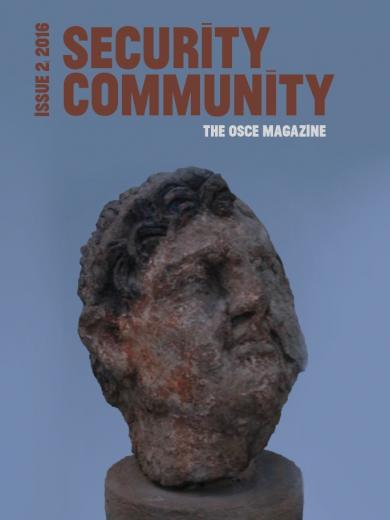Preserving History From Under the Sea
By Peter B. Campbell
The trafficking of antiquities has been an important issue for many decades, but one area that has been sadly neglected is underwater cultural heritage.
Underwater antiquities differ from those on land. Most objects are inorganic, since marine environments consume or bury material such as wood. Underwater finds include canons, porcelain, precious metals or statues. Many of the intact ancient bronze statues that have survived from antiquity come from the sea, since those on land were melted down for reuse. But precious art is the exception. In Europe, amphoras and ancient wine jugs are commonly looted; in Asia, Chinese porcelain is a lucrative item.
One would think marine archaeological sites would be easier to protect than terrestrial ones since they are fewer and a much smaller population has access to them: free divers, fishermen and SCUBA divers. But these are not the only looters. Commercial operators who work legally as salvers of modern vessels often supplement their business by illegally recovering historic artifacts. They turn off their transponders in culturally rich areas, like the sites of naval battles, and steal copper from World War I and World War II vessels, canons from sailing ships and ceramics from ancient sites.
UNESCO’s 2001 Convention on the Protection of the Underwater Cultural Heritage addresses such widespread looting. Many nations have strict legislation for their territorial waters. But marine law is complex and enforcing it at sea can be difficult. Monitoring of sites and investigation of looting is rarely undertaken. Ownership of objects can be complicated: within territorial waters, underwater sites belong to the state, except in the case of a sunken naval vessel, which always belongs to its flag nation.
It often falls to border security and customs officials to stop the trafficking of underwater cultural heritage. Officers can look out for ceramics or metals that are covered in marine growth – shells, coral, or calcium deposits – as an indicator of recent looting. Complete ceramics that are declared or appear to be of great age often come from the sea, as ceramics do not often survive hundreds of years intact on land.
The best practice for border security and customs officials who are faced with a possibly trafficked artifact is to document it with photos and copies of any paperwork and to consult the cultural property database and the specialists of INTERPOL. A looted artifact can sometimes be tied back to a specific shipwreck and in a few cases it has led to the discovery of a previously unknown archaeological site.
As on land, perhaps the biggest crime of underwater looting is the great loss of scientific information. Since the vast majority of ships to be found in the sea carried not gold and silver but everyday items like foodstuffs, most looting attempts are bound to be fruitless. But the recovery of a complete amphora or plate often requires the destruction of the objects around it due to marine concretion processes. Destructive methods such as dragging scallop dredges over the top of shipwrecks cause incalculable damage.
Already half a century ago, pioneer archaeologist Peter Throckmorton had this to say about the destruction of a first century Roman ship by ill-informed skin divers in France in 1957: “A whole chapter in the history of navigation was blown to rubble by some mindless diver, perhaps hunting for nonexistent gold, destroying not from malice but stupidity, like a bored child spilling the sugar on a rainy afternoon. The glory of the world must indeed pass away, but it seems wrong to speed its passage with dynamite and sledgehammers.”
As a field archaeologist I have seen entire shipwrecks smashed and in some cases dynamited in the search for valuables. A single artifact for sale is often indicative of the destruction of hundreds of others; the history lost can never be regained.
Peter Campbell is a maritime archaeologist and researches antiquities trafficking networks. Read more about his work at: www.peterbcampbell.com
Welcome to Security Community
Security Community is the OSCE’s online space for expert analysis and personal perspectives on security issues.
The views expressed in the articles are those of the authors and do not necessarily reflect the official position of the OSCE and its participating States.


